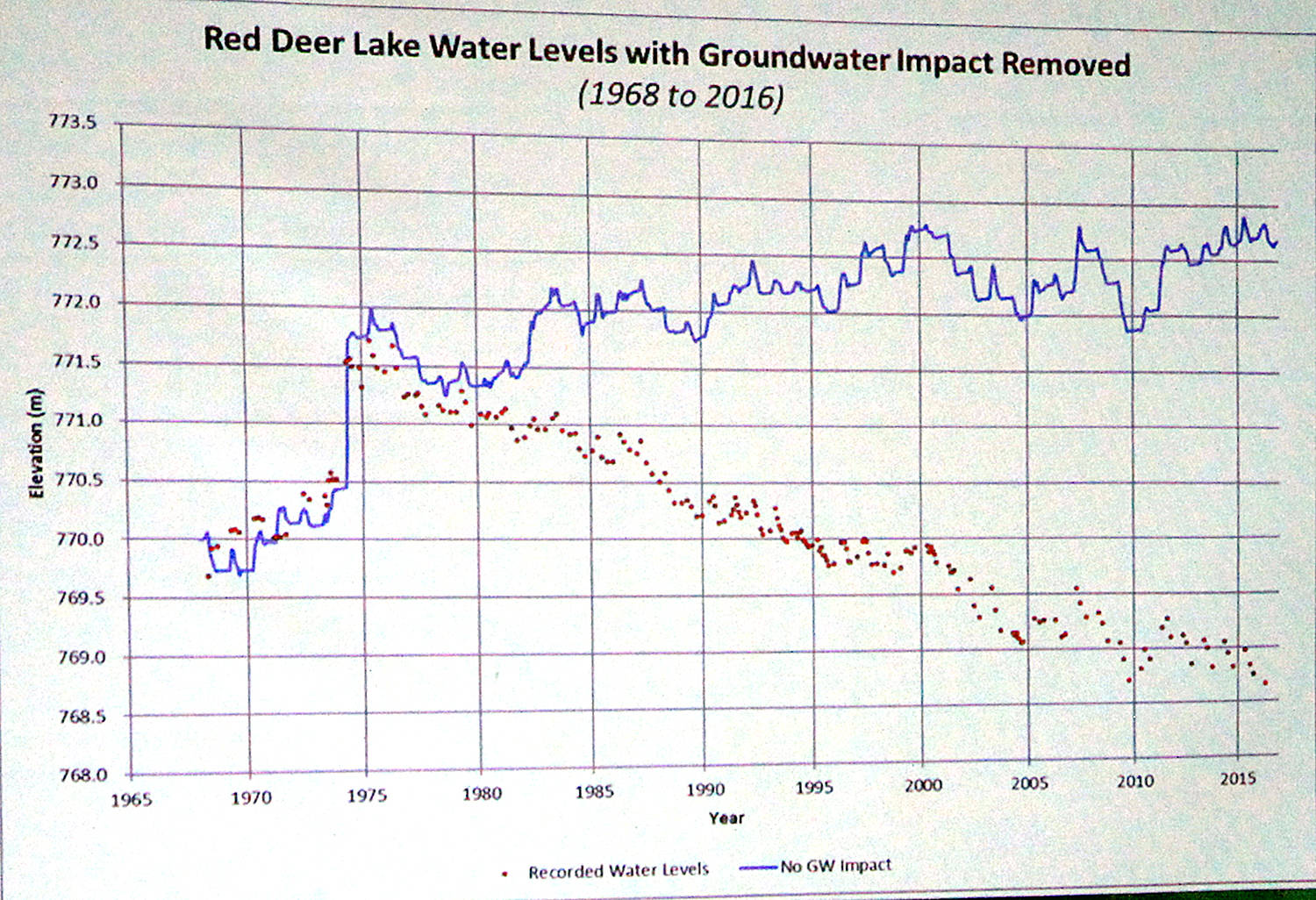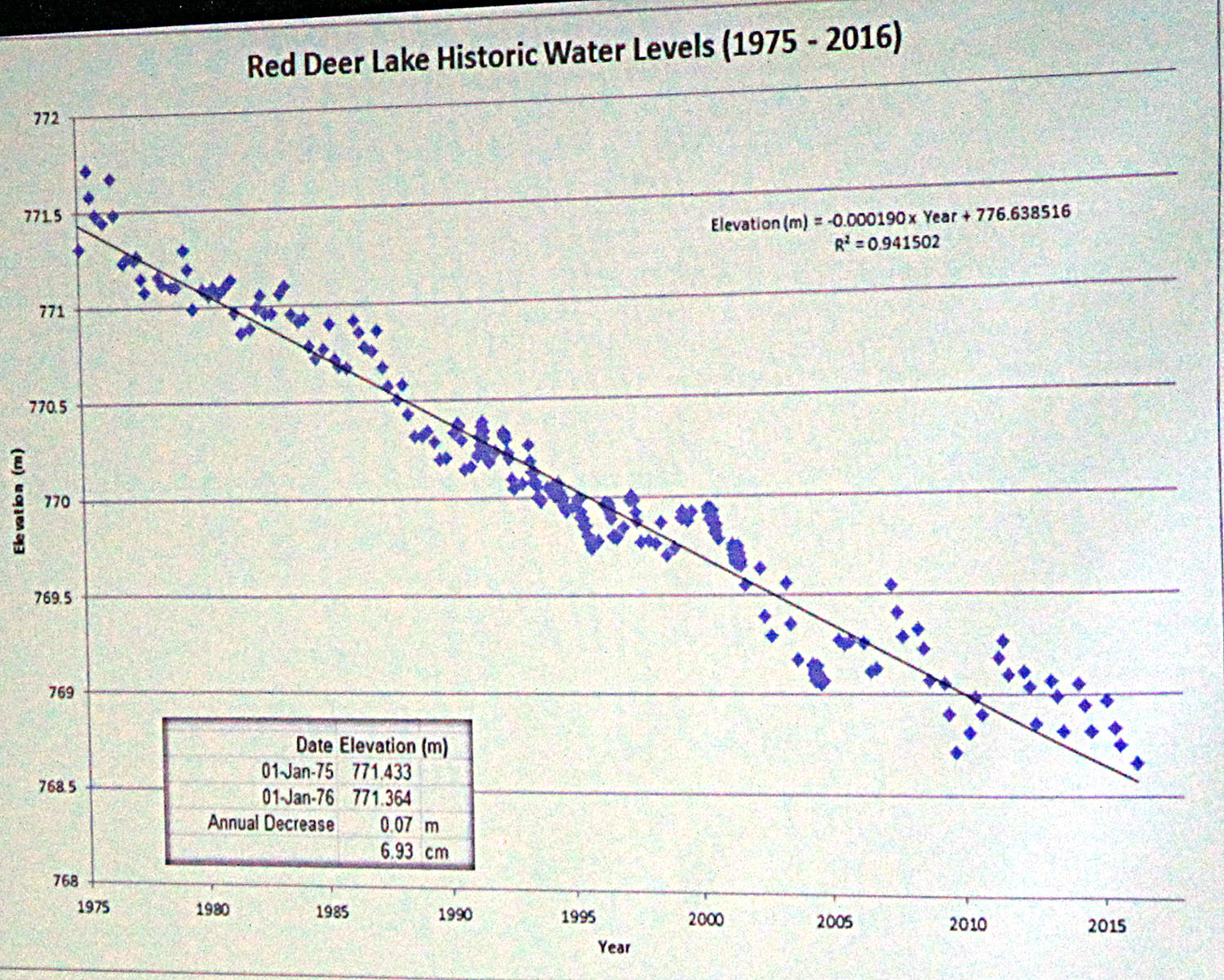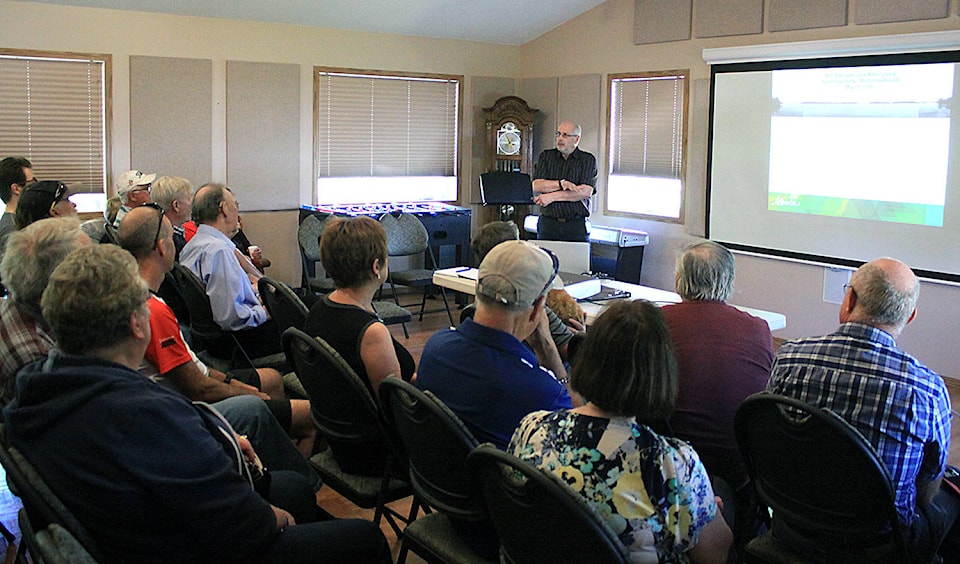A startling and unique puzzle related to Red Deer Lake could be on its way to a solution
Residents of the region were pleased to have some further information during a May 12 presentation from Alberta Environment and Parks (AEP) about water levels. The exact cause is yet to be determined, but the meeting helped alleviate residents’ worries they were being ignored.
For at least the last five years, residents have raised concerns over constantly low lake levels. However, it was only in late 2016 that AEP hydrologist Terry Chamulak was given the job of studying the issue. He provided an update on the results to a crowd of around 60 residents that uncovered a few shocking points as to what is wrong with the lake.
“It’s very important to note that something happened around 1974 and right to the present. There has been a nearly straight line decrease in lake levels,” Chamulak explained.
“None of the other area lakes (Sylvan, Pigeon, Buffalo) are exhibiting a similar pattern, so something very unusual is going on here especially since Red Deer Lake is a closed basin with no obvious outflow and all loss is through evaporation.”
That’s significant since his study found that inflows to the lake are vastly larger than evaporation loss, yet Red Deer Lake has annually lost an average of seven centimetres of depth — or about three full Olympic sized pools per day — since 1974.
“You can see the wet and dry year variability, but the lake level still follows that straight line decreasing trend. I’ve never seen anything quite like it,” said the hydrologist.
Chamulak also noted the four Ducks Unlimited (DU) and any of the surface water licences have basically had no impact on the lake level. In one case, he explained the largest DU project actually allowed more water to flow into Red Deer Lake as its natural spill level was lowered seven inches.
Ground water influence
It is well known that the region has interaction with ground water and Red Deer Lake is no exception, explained Chamulak.
Through use of a calibrated prediction model Red Deer Lake without any ground water influence should be at least two metres higher.
“Since we found inflow exceeds evaporation and if we remove the ground water from the model, we see a huge change as the lake level annual average measurement,” Chamulak said.
“It shows a positive rise from 1974 and that tells me the lake should be doing better than it is.”
He added the downward trend isn’t changed if the model has the other water uses removed.
The study also validated this through measurements from area ground water monitoring wells, one of which in Ponoka showed the nearly same rate of decline from the same year right up until the Town of Ponoka switched from ground water supplies to the regional water line.
“There is a significant ground water influence at Red Deer Lake while the climate and hydrology are all within the norm. It’s like a siphon and we strongly suspect an interaction — natural or a well — between the lake and one of the two aquifers that run below it,” he said.
Chamulak has some theories about what might be the cause but was unable to give concrete examples. He cautioned it will take some time and further study to be sure. He also will be taking back some notes about possible well and seismic activity in the region that were brought up by residents.
Residents pleased
Ken Jensen, the man behind the push for answers, felt the meeting went well.
“We’re all glad they aren’t leaving us high and dry and they are going to keep pursuing this,” he stated.
“It was also nice to know the DU wasn’t the problem and I want to thank them for working with us on this, even going so far as to lower the level at a project so the lake would get more water.
Chamulak added that Jensen will be getting progress updates on the situation as AEP continues its work, while more results are expected to be presented to residents late in August.


